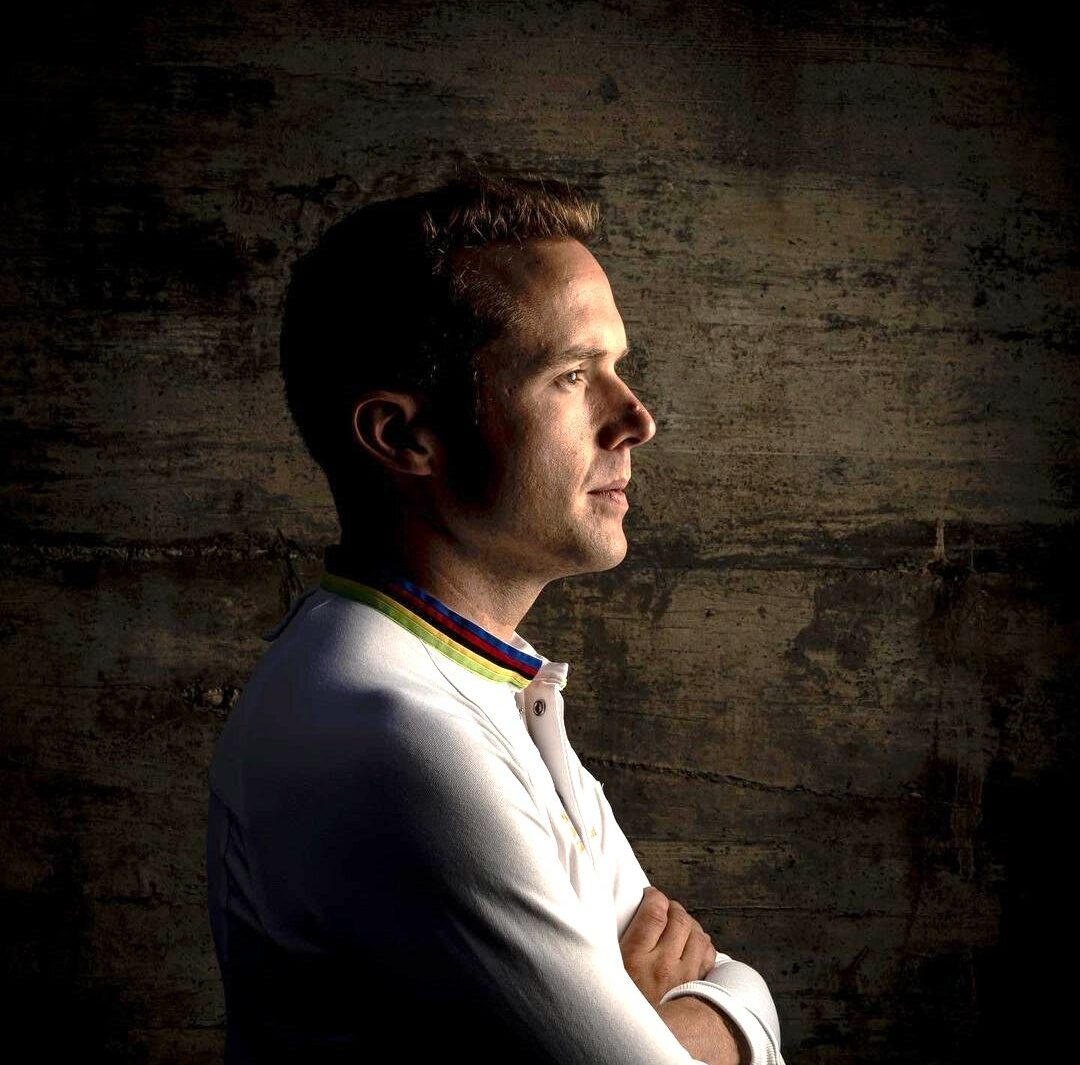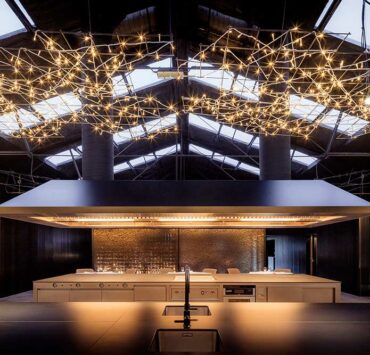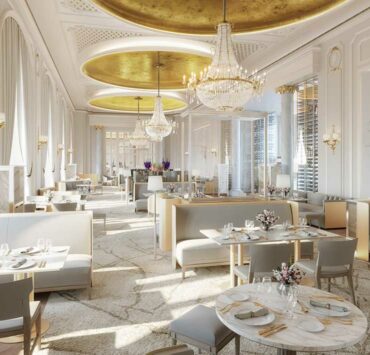Catalan pastry chef Lluc Crusellas belongs to the haute volée of the finest patissiers and was crowned the world's best chocolatier in 2022, but he is much more than that. He is an artist, innovator, and entrepreneur and delights the hearts of discerning connoisseurs. He masters the power of the senses, mainly taste and smell, as we may only know from Marcel Proust's iconic Madeleine moment, where a memory-laden journey into the past starts with a bite of a pastry. His inspiration comes from his travels to exotic lands, far removed from the bustling city life, blending both worlds into his unique creations.
With Eukarya, he has developed a chocolate that is meant to reinvent itself like a living cell. His creations are intended to mutate, take on new forms, and evolve, but never stand still. Connoisseurs of his works are not just meant to eat his chocolate, but rather to experience it, to be seduced by organoleptic experiences. “Always in motion” not only characterises his brand but could also be his life motto. Lluc Crusellas is grateful that chocolate allows him to travel, broaden his horizons, get to know new cultures, and perhaps convey with his creations the unifying element over the divisive.
There is one creation that stole his heart many years ago. A simple dessert that nevertheless led to a turning point in his career, he calls it “Xocosú”. A combination of Tiramisu and Millefeuille, but with more chocolate, which ignited in him the desire for “more”, to rethink patisserie.
In his hometown of Sant Julià, where there was a small village pastry shop called “Pastisseria Crossandra”, he saw with his own eyes that confectionery can genuinely bring happiness and excite people. At seventeen, he learned the pastry craft under the renowned chef Nandu Jubany, where his career would take off, leading him to well-known institutions such as Espai Sucre or Hofmann in Barcelona – and La Pastisseria Barcelona, a milestone in his career.
Until the world championship title in 2022, he has been known far beyond the borders of Spain. Pop-up ventures in Spain and the exhibition of the chocolate elephant in Harrods bear witness to his growing success. An exciting life, which he looks back on with humility and which has also cost him a lot. One does not reach the top without sacrifice. In his interview, he talks about his beginnings, how he had to learn to trust himself, to plunge into the void and in doing so, to reinvent an industry.

Your journey from a summer stint at Nandu Jubany's restaurant to becoming the Best Chocolatier in the World is truly inspiring. Can you walk us through the key moments and hurdles that shaped your career and how you have evolved as a pastry chef since then?
Yes, it's been quite hectic. I'm unsure if my trajectory is inspirational, but I would describe it as “exciting”, in which many things have happened quickly. Although I didn't believe in myself from the beginning, one of the key moments was to throw myself into the void and finally trust in myself, my team, and the illusion of fulfilling dreams. Not only that, but I would say that this has been one of the critical moments, also considering that I had to sacrifice, partly, friends, family, and youth. If we discuss obstacles, the main one is the one I mentioned, often not being able to prioritise friends or my spare time, especially in this profession. Being unable to attend celebrations with my family, take holidays and dedicate time to myself has been the most challenging part of my career.
Are there specific chefs, culinary styles, or foreign cultural influences that have greatly inspired your approach to pastry creation?
I'm sure I do. Ultimately, I think we all grew up influenced and inspired, and even more so now, with social networks and incredible communication. Even so, it's true that I think that French pâtisserie does have a great deal of influence. For example, Christophe Michalak, I adore and appreciate him very much. Pastry chefs from here, Ramon Morató, Enric Monzonis, Miquel Guarro, and Enric Rovira, have been pastry chefs with unbelievable techniques and brutal elegance, which is why they are part of my inspiration.
The name Eukarya, drawing inspiration from cacao cells, is intriguing. Please elaborate on the philosophy behind the brand and how it reflects in the diverse range of 45 chocolate-based products you offer.
The philosophy also comes from the name. The name “Eukarya” is not only because it comes from the cells that make up the cocoa bean but also because a cell is a living, moving, constant element that moves forward to grow and reproduce, forming more life. That is why the idea of the brand is that it should be a living element, in constant movement, but above all, it does not stop, it reproduces itself and transmits movement and life. I intend that the brand is reflected with the products in this way, they are products that will mutate, that will live experiences and will not be static because they will evolve with the days.
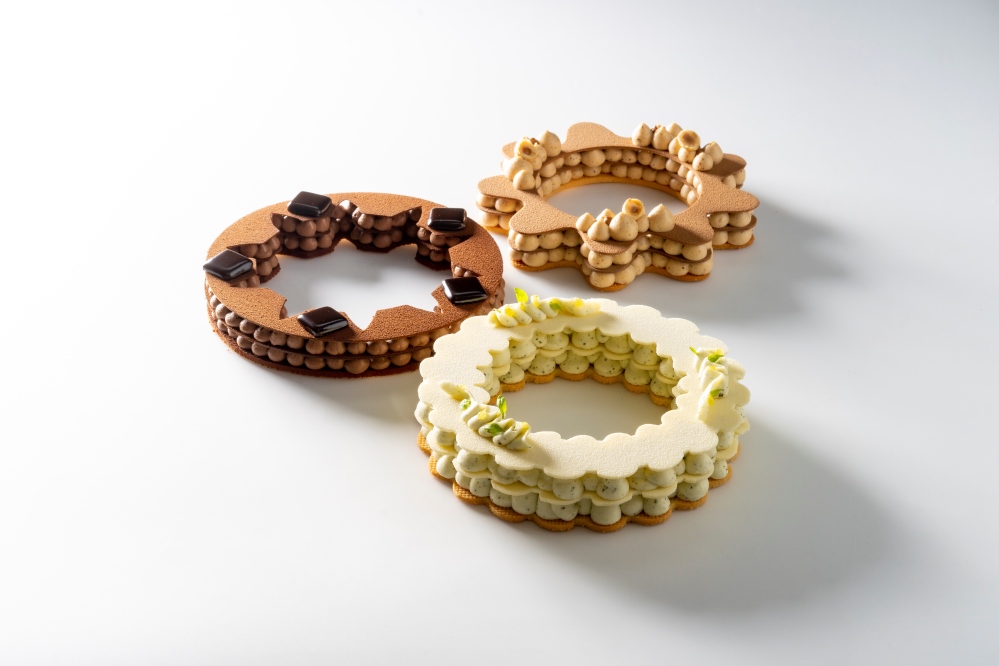
You mentioned seducing consumers through organoleptic experiences. How do you approach the sensory aspects of your creations, ensuring that each product tastes exquisite and engages other senses?
I think that experiences are part of products, i.e. products are no longer just products because behind them lies a great experience. The experience starts when the stimulus arrives, either because you have seen it on social media or TV or when you visit the shop. For example, we have integrated the smell of roasted nuts with a toaster that sends it into the air duct of the shop, so after buying the product, you have already had a great experience. Then you share it, not only in terms of taste but also in terms of smell or sight, making it a multisensory experience, right? That is why I think it is vital to make the customers search for the product and live an experience with it to remember the experience. Because, at last, the memories we will have will be the experiences we will have lived.
How do you believe the combination of chocolate with various flavours and textures can impact a person's mood or sensory experience?
Chocolate and sweets are essential in this respect, as they stimulate and are proven, especially for the human body. I am sure that it is crucial not to deprive ourselves of small pleasures, and above all, we must be aware that our bodies also deserve a small pleasure a day by turning chocolate into a delicious ingredient.
Chocolate has a universal appeal across cultures. In your travels and experiences, how have you seen chocolate used as a medium to bridge cultural differences or as a universal language of sorts?
Chocolate is indeed a universal element that unites different cultures and is an ingredient that, in most countries, is treated equally. Plenty of ingredients are treated differently in most countries, but chocolate is treated just about the same worldwide. That is why it has helped me a lot. Thanks to chocolate, I have travelled, known other cultures, and had a massive experience from which I have learned, although I still have much to learn. It has allowed me to meet people and cultures that have been a great link, either at a cultural or a language level. Communicative… chocolate creates a link. It equalizes all cultures, so there are no differences between cultures and countries.
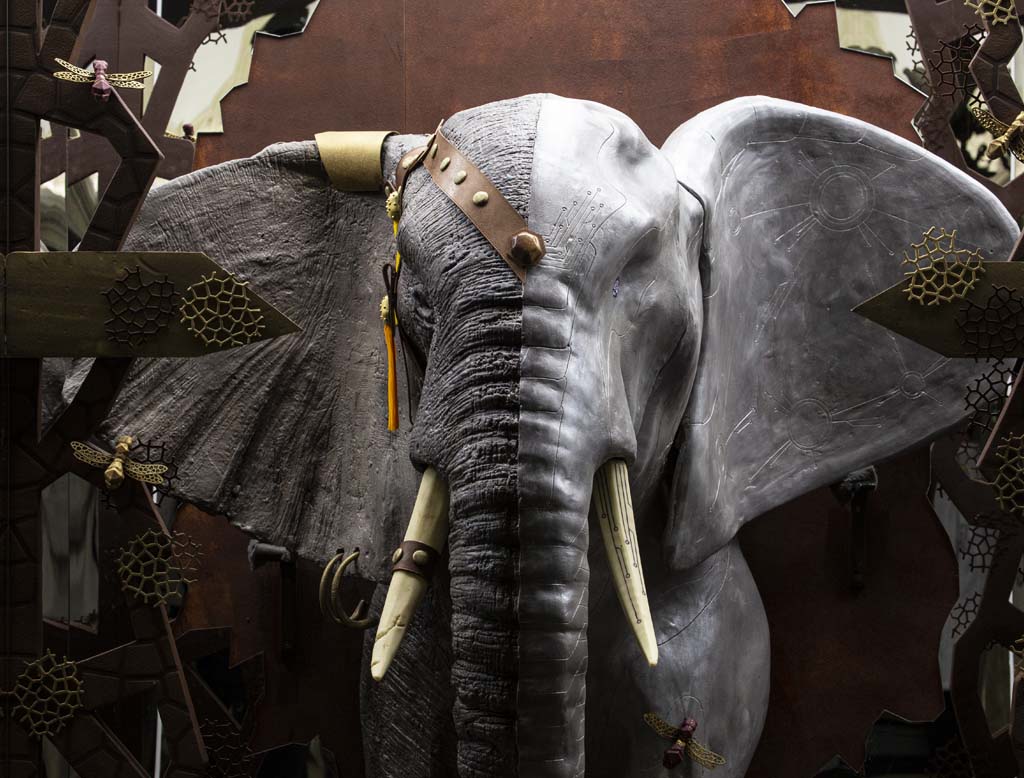
Among the numerous creations you've crafted, do you have a personal favourite pastry or chocolate product that holds a special place in your heart?
One creation has stolen my heart, and I have tucked it away in the corner of my heart. It is a simple dessert, but I think it is the dessert that created a turning point in my career, and I call it “Xocosú”. It is a combination of tiramisu and millefeuille but with much more chocolate. I say it was a turning point in my career because it was a dessert published in pastry and gastronomy magazines, and from that moment on it was when everything started. Where I was born and grew up is a pastry shop called Pastisseria Crossandra, located in Sant Julià de Vilatorta. That is where I noticed that this profession was so beautiful and close to people and, above all, that it transmitted happiness.
Given the central role of cacao in your creations, how do you approach sourcing high-quality cacao, and what steps do you take to ensure the sustainability of your ingredients?
Cocoa is a magnificent, brilliant ingredient, not just as an ingredient itself but also in how it is grown and the process is carried out. I was fortunate to be on plantations in Venezuela last summer, and if all goes well this year, I want to return to Venezuela, Peru, and Colombia. It is a lovely experience to pick all the cocoa by hand one by one, and very surprising. You need to be able to choose, try, and try until you get the best combination for yourself. Although it is difficult, deciding when there are so many good products is challenging. You always have to know the origin and how these plantations are treated, check that the process is the right one, and always guarantee the treatment of the product. We must also consider the people who carry out this process, valuing and caring for them as they deserve and without differences.
How do you think the chemical properties of chocolate, like flavonoids and caffeine, and its combination with various flavours and textures can impact a person's mood or sensory experience?
I think they have a total impact through positive stimuli. Ultimately, the combination of chocolate at a chemical level generates positive stimuli, joy, pleasure and general positivity after eating it, not only as an ingredient but worldwide. You won't find anyone sad buying chocolate. The moment you see it, it's already generating happiness. That's why it is not only the stimulus at the moment of eating it but also the positive experience it generates at the moment of buying it and then consuming it. I think that's what makes it this universal symbol of positivity. If I give someone chocolate as a gift, I feel I'm doing something good or positive. You feel comfort when you give something positive like chocolate as a gift. And you know that around this ingredient, there is joy, illusion and, above all, these energy stimuli that are transferred once they enter the body.

There's a growing interest in the health benefits of dark chocolate. In your opinion, how should chocolate be incorporated into one's lifestyle to maximize its benefits while maintaining balance?
The benefits must be taken advantage of, and the chocolate itself should not be frowned upon, as it is true that some chocolate contains a lot of sugar. Even so, chocolate has significant health benefits, and it is recommendable to consume it, but always in moderation; eventually, I believe that the perfect balance is not in the quantity but in the quality of our habits. It is not the same as eating 50 grams of chocolate a day, staying on the sofa at home, consuming 50 grams and having a balanced life with sports, going to the gym, etc. The problem is not the chocolate we eat but our habits.
Can you share some unique techniques or approaches you've developed that distinguish your pastries and chocolates?
One of the most important techniques that I have been able to contribute and that I am most happy to have contributed is a technique that I used to paint the chocolates at the world championship, at the Word Chocolate Masters, and that is called a tampon. It is a technique that has not been possible to contribute to, and I try to ensure that my cakes and chocolates have two words: simplicity and productivity. These two words are significant, and I constantly try to make my products identify with them and follow this essence.
The pop-up venture at the hotel Yurban Trafalgar in Barcelona and presenting your chocolate elephant in Harrods showcased your products.
The brand must be alive and mobile, so the pop-up and the elephant in Harrods influence the brand to spread, move, and be skilful. That doesn't stop. That's why visibility helps a lot, especially getting closer to the public, right? To the big cities. We intend to move around more and be in big cities in Spain.
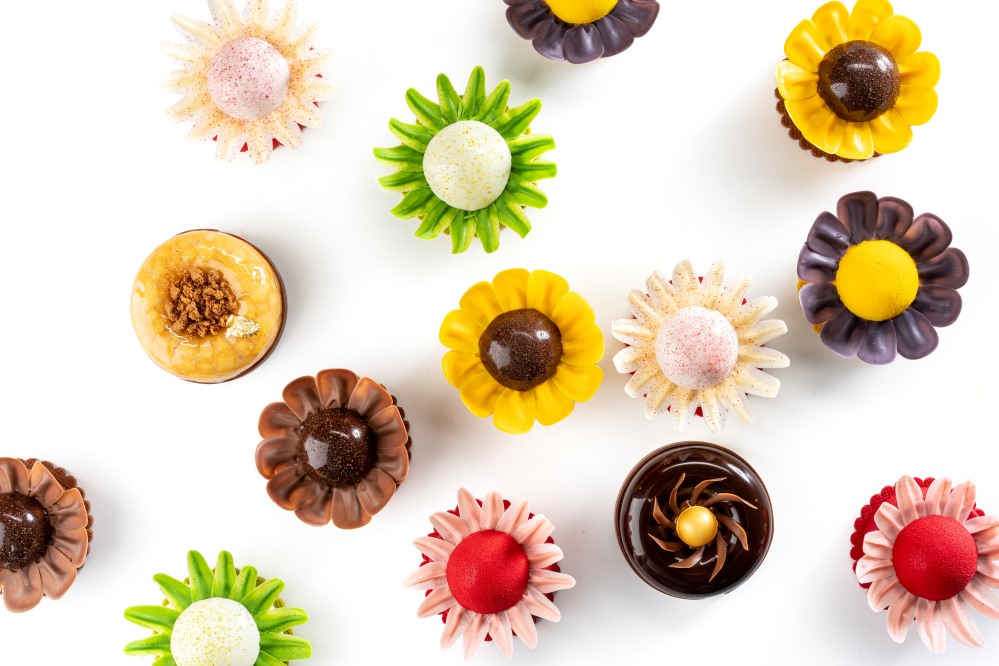
What culinary innovations or trends are you currently exploring or excited about, and how do you incorporate them into your creations?
At a culinary and gastronomic level and as a pastry chef, one of the most important trends is the work of fibres. Especially fibres that help to texturise recipes and avoid gelatins or some ingredients that go through chemical processes. The change towards more natural and less chemical processes, I think, is the most essential thing. In terms of formulation, this is where most emphasis is placed, and it is vital to work on this issue, speaking from experience. And I repeat, products are no longer products. They are experienced, and when a product is an experience, it has a future. When a product is just a product, it has no future.
Looking ahead, how do you envision the future of chocolate in terms of innovation, consumer trends, and its role in society?
I believe this product will increase at a societal level, which will, unfortunately, become pricier. Therefore, it will probably be consumed more, but in less quantity. For example, now we can eat a whole bar of chocolate and not eat any more for the next three days, but in the future, it will most likely be the other way around. You will eat more days in a row, but not as much. Ultimately, I think we will be more aware of chocolate consumption, and the same thing will happen regarding innovation. Chocolate will be much higher quality, moving away from large quantities of sugar, flavourless chocolates and often organoleptically bad cocoa. We will move away from this to much higher quality chocolates, following in the footsteps of those who have made coffee. It has been a brutal job, and there are good coffee shops with excellent people and superb coffee makers worldwide. Coffee has stopped being a coffee to become an entire experience. You go to the coffee shop and see how they make it; you taste it, the cup, the space and in the end, I think this is the path cocoa has to take.
As a master of chocolate and pastries, do you have guilty culinary pleasures or indulgences that you enjoy in your downtime? What is your go-to comfort food?
The truth is that everything that has happened to me has given me a chance to try to eat exciting, good things and have incredible experiences. Still, I have to say that my food in my spare time and my pleasure is to be with my family or friends and eat a typical Catalan dish, bread with tomato and local cold meat, to enjoy and be at home. My culinary pleasure is feeling at home with my family and friends and eating the food of a lifetime.
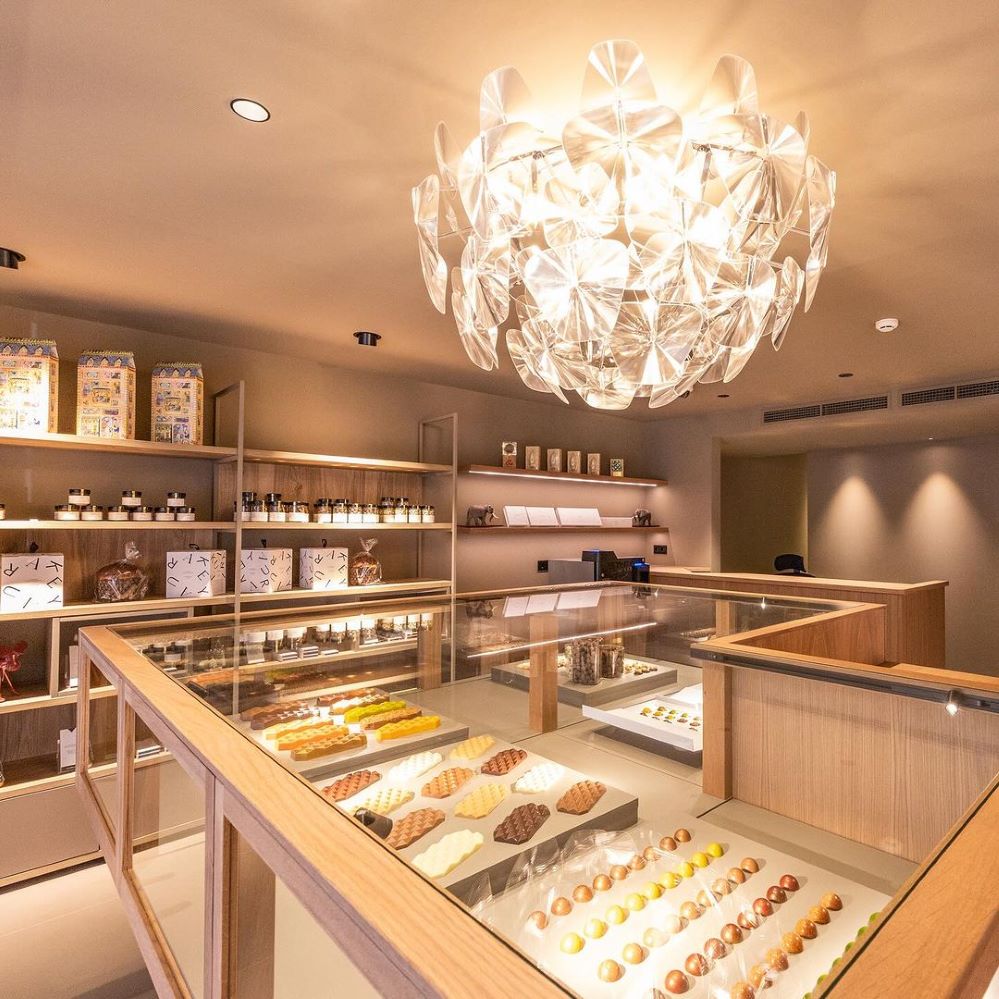
Outside the world of pastry, what are your hobbies or activities that bring you joy and relaxation? How do these non-culinary pursuits contribute to your overall well-being and creativity?
My great hobby and passion, which I grew up with regarding values, attitude, and everything in general, is cycling. Cycling is my great escape; it's how I have fun. Almost all my friends are from the cycling world because I competed for many years and thoroughly enjoyed it. I know the territory, geography, and places… and it's a beautiful sport that serves me a lot as an escape and, when I go alone, to reconnect with myself.
If you could go back in time and give advice to your 17-year-old self when you started your journey as a pastry chef, what words of wisdom would you share, knowing what you know now?
When I decided to study pâtisserie, I had many doubts. Although I don't regret anything because I have always been myself, I would ask him to believe in himself and trust, listen to everyone, and filter what they tell him very well because I am a person who is significantly affected by things. But trust and move forward, and, above all, fight hard for his goals. That's, done so far, the only advice I would give him is to value himself much more and be aware of his day-to-day.
Thank you very much, Lluc, it was a pleasure!
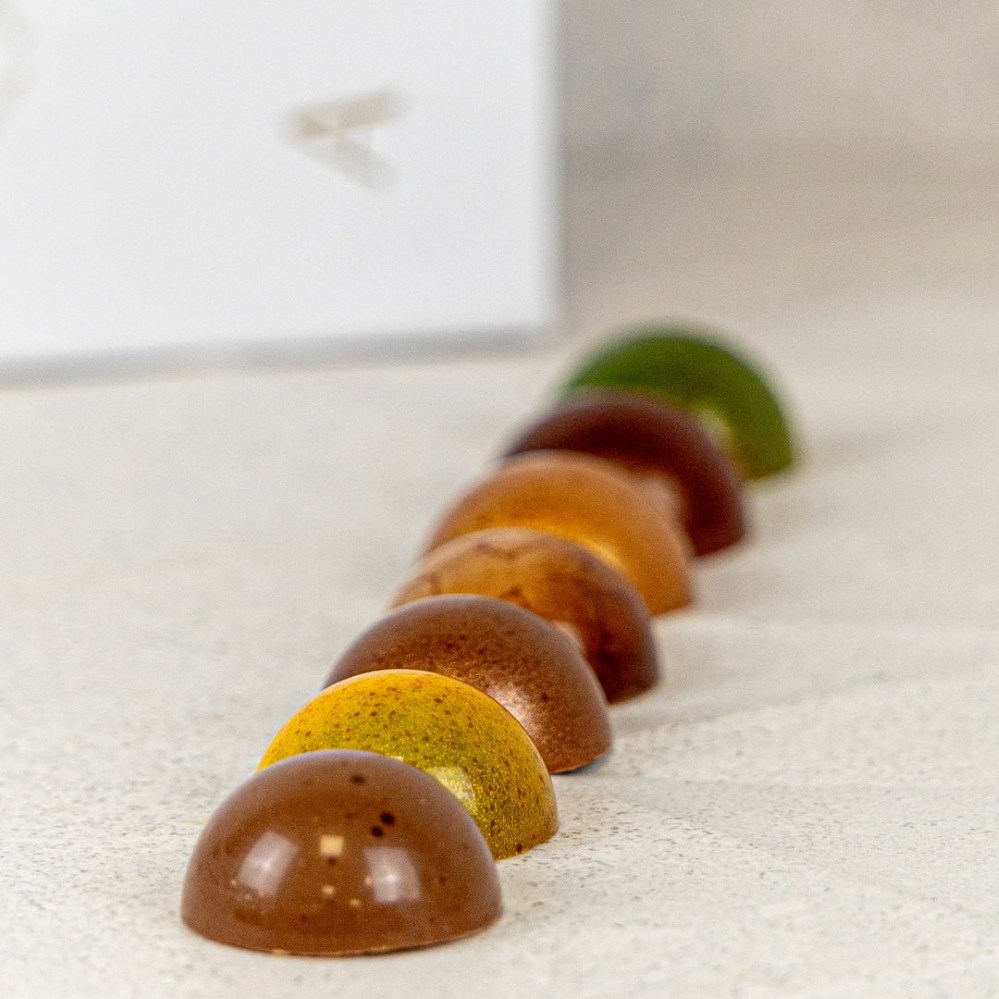
Read more:
Last Updated on April 11, 2024 by Editorial Team
As editor-in-chief, Raffaele infuses the magazine with a cosmopolitan flair, drawing from his experiences in London, Berlin, New York, and Barcelona. His 20-year tenure with luxury brands, coupled with a love for travel and food, enriches the magazine's content.






